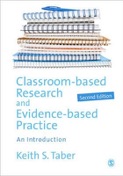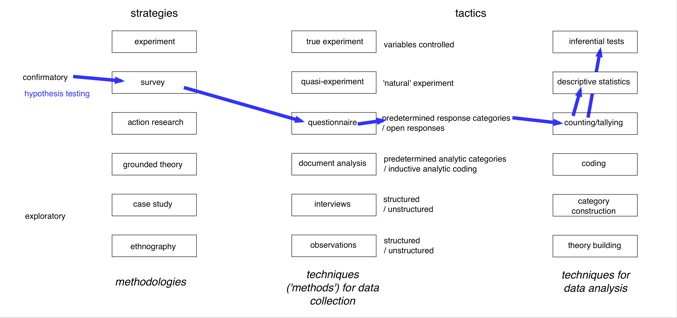Educational Research Methods

A site to support teaching and learning...

Muijs & Dunne, 2010
Mapping out the research design in
Muijs, D., & Dunne, M. (2010). Setting by ability - or is it? A quantitative study of determinants of set placement in English secondary schools. Educational Research, 52(4), 391 - 407.
Research questions are therefore:
(1) What factors do teachers say influence setting decisions in their schools?
(2) What variables are significant predictors of set membership of students?
Hypotheses were:
(1) Analysis of survey data will show that:
(a) Teachers will attribute setting decisions to ability or achievement.
(2) Analysis of national datasets will show that:
(a) Prior achievement is a significant predictor of set membership;
(b) Ethnicity is a significant predictor of set membership;
(c) Social class is a significant predictor of set membership; and
(d) Special educational needs (SEN) status is a significant predictor of set membership.
Methodology
To test these hypotheses, we conducted a survey of schools and analysed national datasets.
Variables:
three categories – high, low or middle set – were necessary for analytical comparison. .. Setting was thus coded as a three-category-dependent variable with analyses aimed to predict set placement based on a number of predictors.
The measure of attainment was prior attainment in statutory tests. …proxy variables for social class…based on … demographic variables such as age, gender, ethnicity, income, education level, occupation, home ownership and type, car ownership, housing density etc. and ‘lifestyle’ variables such as interest in current affairs, satellite television, newspapers read, holiday preferences, hobbies and shopping habits. …
There was a total of 56 types, 17 groups and five broader categories. In these analyses, we have used the five categories to allow easier interpretation of the data in the regression models.
To allow sufficient numbers in each category and therefore meaningful analysis, we have recoded ethnicity into four main groups based on their presence in the sample (Table 2): White, Bangladeshi, Indian, Pakistani and Black.
Three SEN categories have been used in these analyses. These are Statemented, School Action Plus and School Action…
Muijs & Dunne, 2010: 395
Descriptive stats:
“In response to the question on what basis setting decisions were made in English,
22.7% of respondents specifically mentioned ability.
The vast majority of other responses (72.8%) referred to attainment or test results,
with 4.5% mentioning other factors, such as attitudes and behaviours as influencing setting decisions.
In mathematics,
ability was mentioned less often as a basis for decision making (11%),
as were behaviour and attitudes (less than 2.3%).
By contrast, use of achievement and attainment data predominated as reasons given (88.7%).”
Muijs & Dunne, 2010: 395
Mathematical modelling
"In order to explore this question, MLR [multinomial logistic regression] models were used, where the relationship of all the variables in the model with the dependent variable (set placement) could be modelled simultaneously, and the relationships between dependent and independent were modelled taking into account the relationships between the independents in the model.
Logistic regression is based on the principle of calculating the probability that an event (e.g. being assigned to the high set) will occur (e.g. what is the probability of being assigned to the high set if I am a boy?)…
Setting was predicted on the basis of the independent variables, using MLR.”
Muijs & Dunne, 2010: 402

This is a personal site of Keith S. Taber to support teaching of educational research methods.
(Dr Keith Taber is Professor of Science Education at the University of Cambridge.)
2016
